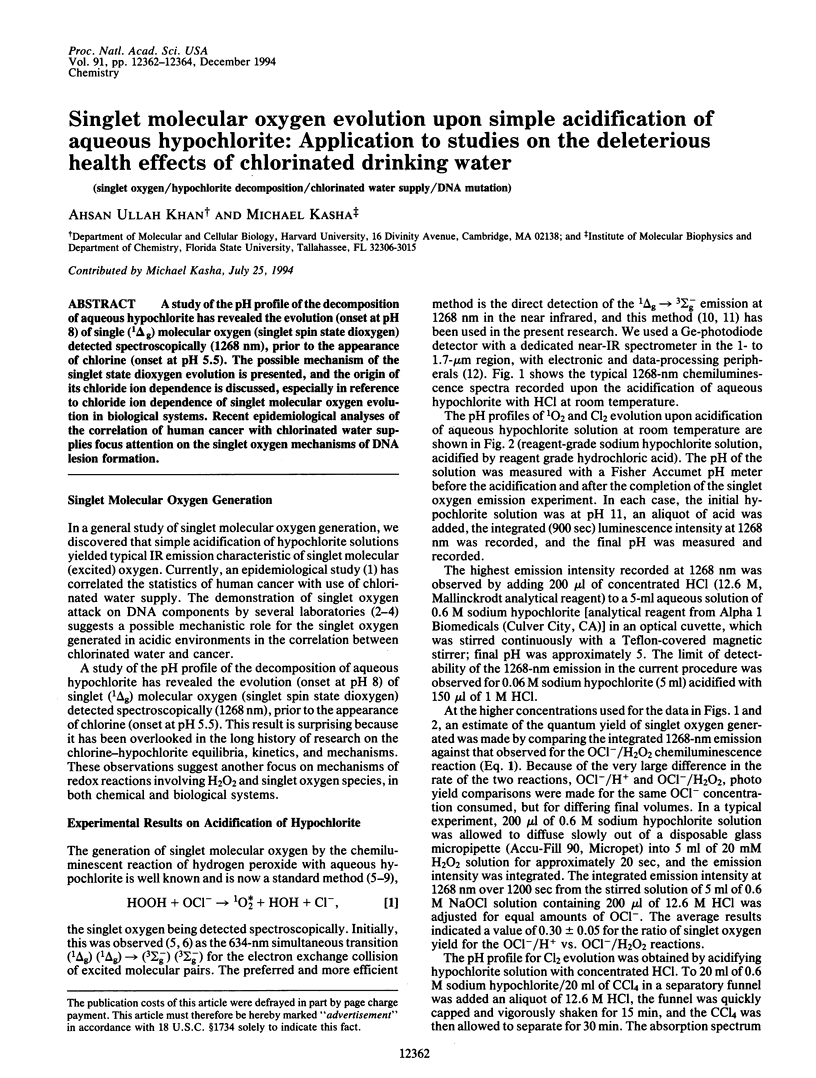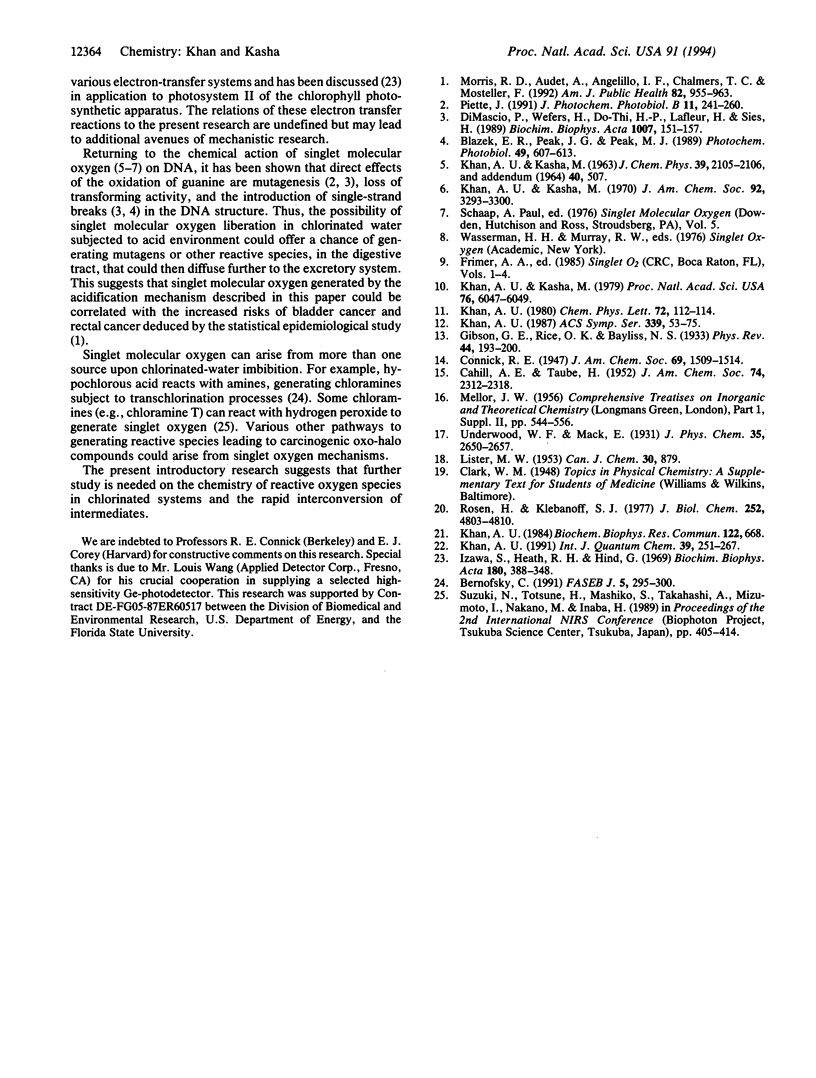Abstract
A study of the pH profile of the decomposition of aqueous hypochlorite has revealed the evolution (onset at pH 8) of single (1 delta g) molecular oxygen (singlet spin state dioxygen) detected spectroscopically (1268 nm), prior to the appearance of chlorine (onset at pH 5.5). The possible mechanism of the singlet state dioxygen evolution is presented, and the origin of its chloride ion dependence is discussed, especially in reference to chloride ion dependence of singlet molecular oxygen evolution in biological systems. Recent epidemiological analyses of the correlation of human cancer with chlorinated water supplies focus attention on the singlet oxygen mechanisms of DNA lesion formation.
Full text
PDF


Selected References
These references are in PubMed. This may not be the complete list of references from this article.
- Bernofsky C. Nucleotide chloramines and neutrophil-mediated cytotoxicity. FASEB J. 1991 Mar 1;5(3):295–300. doi: 10.1096/fasebj.5.3.1848195. [DOI] [PubMed] [Google Scholar]
- Blazek E. R., Peak J. G., Peak M. J. Singlet oxygen induces frank strand breaks as well as alkali- and piperidine-labile sites in supercoiled plasmid DNA. Photochem Photobiol. 1989 May;49(5):607–613. doi: 10.1111/j.1751-1097.1989.tb08431.x. [DOI] [PubMed] [Google Scholar]
- Di Mascio P., Wefers H., Do-Thi H. P., Lafleur M. V., Sies H. Singlet molecular oxygen causes loss of biological activity in plasmid and bacteriophage DNA and induces single-strand breaks. Biochim Biophys Acta. 1989 Mar 1;1007(2):151–157. doi: 10.1016/0167-4781(89)90033-x. [DOI] [PubMed] [Google Scholar]
- Izawa S., Heath R. L., Hind G. The role of chloride ion in photosynthesis. 3. The effect of artificial electron donors upon electron transport. Biochim Biophys Acta. 1969 Jun 24;180(2):388–398. doi: 10.1016/0005-2728(69)90123-6. [DOI] [PubMed] [Google Scholar]
- Khan A. U., Kasha M. Direct spectroscopic observation of singlet oxygen emission at 1268 nm excited by sensitizing dyes of biological interest in liquid solution. Proc Natl Acad Sci U S A. 1979 Dec;76(12):6047–6049. doi: 10.1073/pnas.76.12.6047. [DOI] [PMC free article] [PubMed] [Google Scholar]
- Khan A. U. Myeloperoxidase singlet molecular oxygen generation detected by direct infrared electronic emission. Biochem Biophys Res Commun. 1984 Jul 31;122(2):668–675. doi: 10.1016/s0006-291x(84)80085-6. [DOI] [PubMed] [Google Scholar]
- Morris R. D., Audet A. M., Angelillo I. F., Chalmers T. C., Mosteller F. Chlorination, chlorination by-products, and cancer: a meta-analysis. Am J Public Health. 1992 Jul;82(7):955–963. doi: 10.2105/ajph.82.7.955. [DOI] [PMC free article] [PubMed] [Google Scholar]
- Piette J. Biological consequences associated with DNA oxidation mediated by singlet oxygen. J Photochem Photobiol B. 1991 Dec;11(3-4):241–260. doi: 10.1016/1011-1344(91)80030-l. [DOI] [PubMed] [Google Scholar]
- Rosen H., Klebanoff S. J. Formation of singlet oxygen by the myeloperoxidase-mediated antimicrobial system. J Biol Chem. 1977 Jul 25;252(14):4803–4810. [PubMed] [Google Scholar]


